Copyright 2008 by Garth Sundem, Jan Krieger, and Kristi Pikiewicz
First Skyhorse Publishing edition 2014
All rights reserved. No part of this book may be reproduced in any manner without the express written consent of the publisher, except in the case of brief excerpts in critical reviews or articles. All inquiries should be addressed to Skyhorse Publishing, 307 West 36th Street, 11th Floor, New York, NY 10018.
Skyhorse Publishing books may be purchased in bulk at special discounts for sales promotion, corporate gifts, fund-raising, or educational purposes. Special editions can also be created to specifications. For details, contact the Special Sales Department, Skyhorse Publishing, 307 West 36th Street, 11th Floor, New York, NY 10018 or .
Skyhorse and Skyhorse Publishing are registered trademarks of Skyhorse Publishing, Inc., a Delaware corporation.
Visit our website at www.skyhorsepublishing.com.
10 9 8 7 6 5 4 3 2 1
Library of Congress Cataloging-in-Publication Data is available on file.
Cover design by Lisa Miller
Print ISBN: 978-1-62914-686-7
Ebook ISBN: 978-1-62914-838-0
Printed in China
Contents
Preface
T he face of your classroom is changing. According to the U.S. Department of Education, more than five million English Language Learner (ELL) students were enrolled in public schools in 2003. This is more than double the number found in 1990, representing a rate of increase seven times that of total school enrollment (National Clearinghouse for English Language Acquisition and Language Instruction Educational Programs, 2006). And while the majority of these ELL students speak Spanish, this is changing as well (Meyer, 2004). In todays classroom, you might use Korean in the morning, Russian in the afternoon, and Arabic tomorrow. Even if you dont currently have students who speak the ten languages in this book, the chances are you soon will. And it might take only one or two words from you to show your new students that they are appreciated in your classroom, school, and community.
This book offers the resources you need to communicate, at least on a very basic level, with students from the ten most common non-English-speaking populations in U.S. classrooms. With picture dictionaries, content area vocabulary, and translated reading level assessments you can support your students at school; with reproducible parent letters you can bridge the all-important gap with home.
The ten languages in this book are not the ten most common in classrooms. But they are the most common for students who do not also speak English . Thus Hmong, Haitian Creole, and Cantonese are included, while French, German, and Mandarin are not. This distinction might seem small, but it speaks to the purpose of this book: you can use it to communicate when English is not an option.
While communication may be the most obvious of your challenges in teaching ELL students, it is probably not your only goal. Supporting your students who are struggling with culture shock and the difficulties of adjusting to a new school, country, and potentially a new family may also be important to you. To help you learn about your new students and connect with them, this book offers quick information about your students countries of origin. With your compassion and these communication aids, you can help ELL students learn to respect their individuality while getting up to speed in the classroom as quickly as possible.
Publishers Acknowledgments
W e gratefully acknowledge the contributions of the following reviewers:
Becky Castro, Project Director
Montebello Unified School District, Montebello, CA
Ann C. Edmonds, Consultant
Clayton School District, Clayton, MO
Mary Enright, Assistant Principal
PS/MS 4, Bronx, NY
Thomas S. C. Farrell, Professor of Applied Linguistics and Department Chair
Brock University, St. Catharines, Ontario, Canada
Johanna Haver, Independent Education Consultant and Author
Phoenix, AZ
Tery J. Medina, Associate Director
The Southeastern Equity Center, Fort Lauderdale, FL
Nenita Pambid Domingo, Asian Languages and Cultures Lecturer
University of California, Los Angeles
Gay Q. Yuen, Professor of Education
California State University, Los Angeles
Deborah A. Zeis, Teacher
Charlotte Middle School, Charlotte, MI
About the Authors
 Garth Sundem , MM, is an author and teacher trainer, and has published more than twenty books, primarily on the subjects of literacy and social studies. He graduated magna cum laude from Cornell University and earned a masters degree in music theory and composition. Titles of which he is especially proud include The Doggy Dung Disaster: And Other True Stories of Regular Kids Doing Heroic Things (Free Spirit Press, 2006), Implementing an Effective Writing Program Using the Traits of Good Writing (Teacher Created Materials, 2004), and Geek Logik: 50 Foolproof Equations for Everyday Life (Workman Publishing, 2006).
Garth Sundem , MM, is an author and teacher trainer, and has published more than twenty books, primarily on the subjects of literacy and social studies. He graduated magna cum laude from Cornell University and earned a masters degree in music theory and composition. Titles of which he is especially proud include The Doggy Dung Disaster: And Other True Stories of Regular Kids Doing Heroic Things (Free Spirit Press, 2006), Implementing an Effective Writing Program Using the Traits of Good Writing (Teacher Created Materials, 2004), and Geek Logik: 50 Foolproof Equations for Everyday Life (Workman Publishing, 2006).
 Jan Krieger, MEd, has worked as a multicultural educator for many years, teaching at bilingual schools throughout Mexico and Central and South America, as well as in the United States, where he has taught Spanish at both the middle and high school levels in Bozeman, Montana. He was recently selected as a Fulbright Exchange Teacher and taught English as a second language in Cuernavaca, Mexico. His masters degree is in curriculum and instruction with an emphasis in multicultural education. Before teaching, he worked as a wilderness guide, fishing guide, mountain bike guide, and field researcher in Alaska; directed the Yellowstone Youth Conservation Corps; was a ski patroller in Argentina; and has led adventure trips in Tahiti, the Galapagos Islands, and the Amazon region. Every year, he leads groups of language students to Spain, France, and Germany.
Jan Krieger, MEd, has worked as a multicultural educator for many years, teaching at bilingual schools throughout Mexico and Central and South America, as well as in the United States, where he has taught Spanish at both the middle and high school levels in Bozeman, Montana. He was recently selected as a Fulbright Exchange Teacher and taught English as a second language in Cuernavaca, Mexico. His masters degree is in curriculum and instruction with an emphasis in multicultural education. Before teaching, he worked as a wilderness guide, fishing guide, mountain bike guide, and field researcher in Alaska; directed the Yellowstone Youth Conservation Corps; was a ski patroller in Argentina; and has led adventure trips in Tahiti, the Galapagos Islands, and the Amazon region. Every year, he leads groups of language students to Spain, France, and Germany.
 Kristi Pikiewicz is a middle school social studies and language arts teacher, author, and frequent presenter at local, state, and national conferences. Her first teaching position was at Hill Middle School in Novato, California where she was hired by the Bay Area School Reform Collaborative to work as a Title I Literacy Specialist in an area where many students were learning English as a second language. She continues to value multiculturalism and hands-on learning in her classroom. Ms. Pikiewicz holds a BS in environmental science with a minor in political science and is finishing her PhD in Clinical Psychology.
Kristi Pikiewicz is a middle school social studies and language arts teacher, author, and frequent presenter at local, state, and national conferences. Her first teaching position was at Hill Middle School in Novato, California where she was hired by the Bay Area School Reform Collaborative to work as a Title I Literacy Specialist in an area where many students were learning English as a second language. She continues to value multiculturalism and hands-on learning in her classroom. Ms. Pikiewicz holds a BS in environmental science with a minor in political science and is finishing her PhD in Clinical Psychology.
Introduction
HOW TO USE THIS BOOK
While this book will be useful to the ELL professional, it is meant for the general K-12 teacher who has encountered or may encounter English Language Learner students in the classroom. A chapter is included for each of the ten languages most spoken by students who do not also speak English, beginning with the most common language and proceeding to the least common one. Each chapter includes the following resources:
Country of Origin Information Use this country and culture information to connect with ELL students and to show your appreciation for and interest in students cultural backgrounds. Perhaps you will have a small celebration on an important holiday, or ask ELL students to share their traditions or religion with the rest of the class.

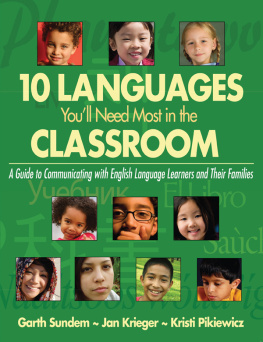
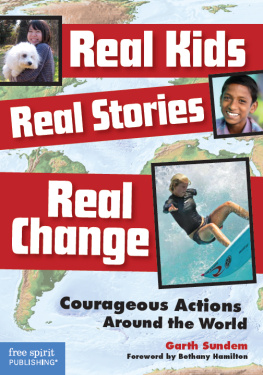

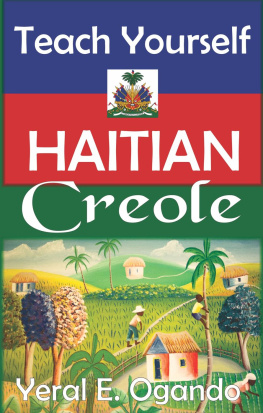
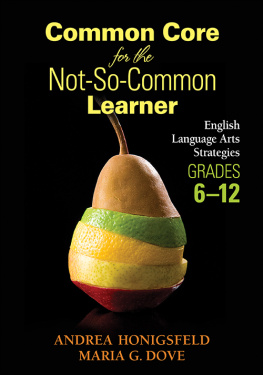
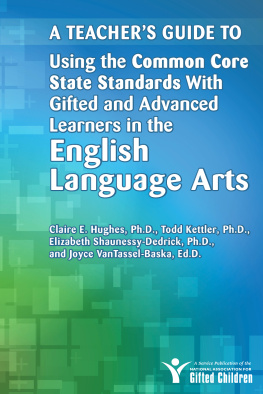
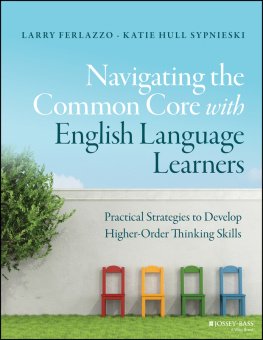
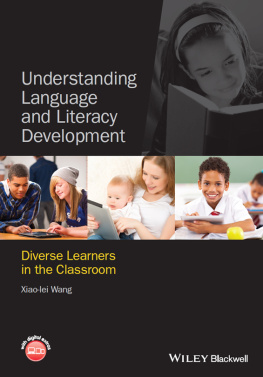
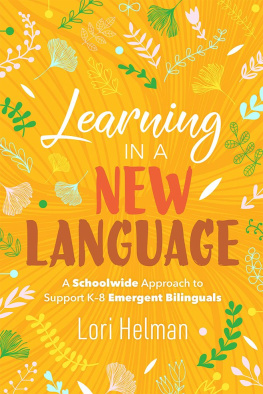
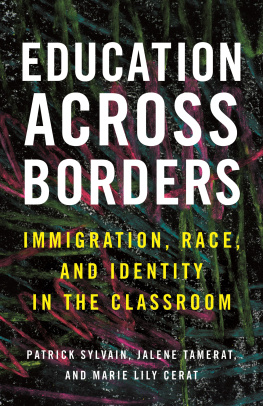

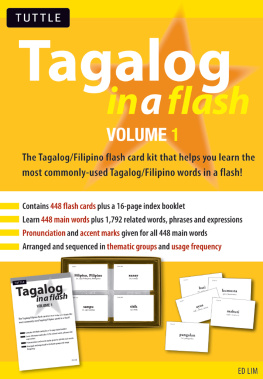
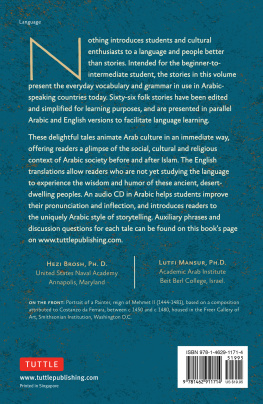



 Garth Sundem , MM, is an author and teacher trainer, and has published more than twenty books, primarily on the subjects of literacy and social studies. He graduated magna cum laude from Cornell University and earned a masters degree in music theory and composition. Titles of which he is especially proud include The Doggy Dung Disaster: And Other True Stories of Regular Kids Doing Heroic Things (Free Spirit Press, 2006), Implementing an Effective Writing Program Using the Traits of Good Writing (Teacher Created Materials, 2004), and Geek Logik: 50 Foolproof Equations for Everyday Life (Workman Publishing, 2006).
Garth Sundem , MM, is an author and teacher trainer, and has published more than twenty books, primarily on the subjects of literacy and social studies. He graduated magna cum laude from Cornell University and earned a masters degree in music theory and composition. Titles of which he is especially proud include The Doggy Dung Disaster: And Other True Stories of Regular Kids Doing Heroic Things (Free Spirit Press, 2006), Implementing an Effective Writing Program Using the Traits of Good Writing (Teacher Created Materials, 2004), and Geek Logik: 50 Foolproof Equations for Everyday Life (Workman Publishing, 2006). Jan Krieger, MEd, has worked as a multicultural educator for many years, teaching at bilingual schools throughout Mexico and Central and South America, as well as in the United States, where he has taught Spanish at both the middle and high school levels in Bozeman, Montana. He was recently selected as a Fulbright Exchange Teacher and taught English as a second language in Cuernavaca, Mexico. His masters degree is in curriculum and instruction with an emphasis in multicultural education. Before teaching, he worked as a wilderness guide, fishing guide, mountain bike guide, and field researcher in Alaska; directed the Yellowstone Youth Conservation Corps; was a ski patroller in Argentina; and has led adventure trips in Tahiti, the Galapagos Islands, and the Amazon region. Every year, he leads groups of language students to Spain, France, and Germany.
Jan Krieger, MEd, has worked as a multicultural educator for many years, teaching at bilingual schools throughout Mexico and Central and South America, as well as in the United States, where he has taught Spanish at both the middle and high school levels in Bozeman, Montana. He was recently selected as a Fulbright Exchange Teacher and taught English as a second language in Cuernavaca, Mexico. His masters degree is in curriculum and instruction with an emphasis in multicultural education. Before teaching, he worked as a wilderness guide, fishing guide, mountain bike guide, and field researcher in Alaska; directed the Yellowstone Youth Conservation Corps; was a ski patroller in Argentina; and has led adventure trips in Tahiti, the Galapagos Islands, and the Amazon region. Every year, he leads groups of language students to Spain, France, and Germany. Kristi Pikiewicz is a middle school social studies and language arts teacher, author, and frequent presenter at local, state, and national conferences. Her first teaching position was at Hill Middle School in Novato, California where she was hired by the Bay Area School Reform Collaborative to work as a Title I Literacy Specialist in an area where many students were learning English as a second language. She continues to value multiculturalism and hands-on learning in her classroom. Ms. Pikiewicz holds a BS in environmental science with a minor in political science and is finishing her PhD in Clinical Psychology.
Kristi Pikiewicz is a middle school social studies and language arts teacher, author, and frequent presenter at local, state, and national conferences. Her first teaching position was at Hill Middle School in Novato, California where she was hired by the Bay Area School Reform Collaborative to work as a Title I Literacy Specialist in an area where many students were learning English as a second language. She continues to value multiculturalism and hands-on learning in her classroom. Ms. Pikiewicz holds a BS in environmental science with a minor in political science and is finishing her PhD in Clinical Psychology.